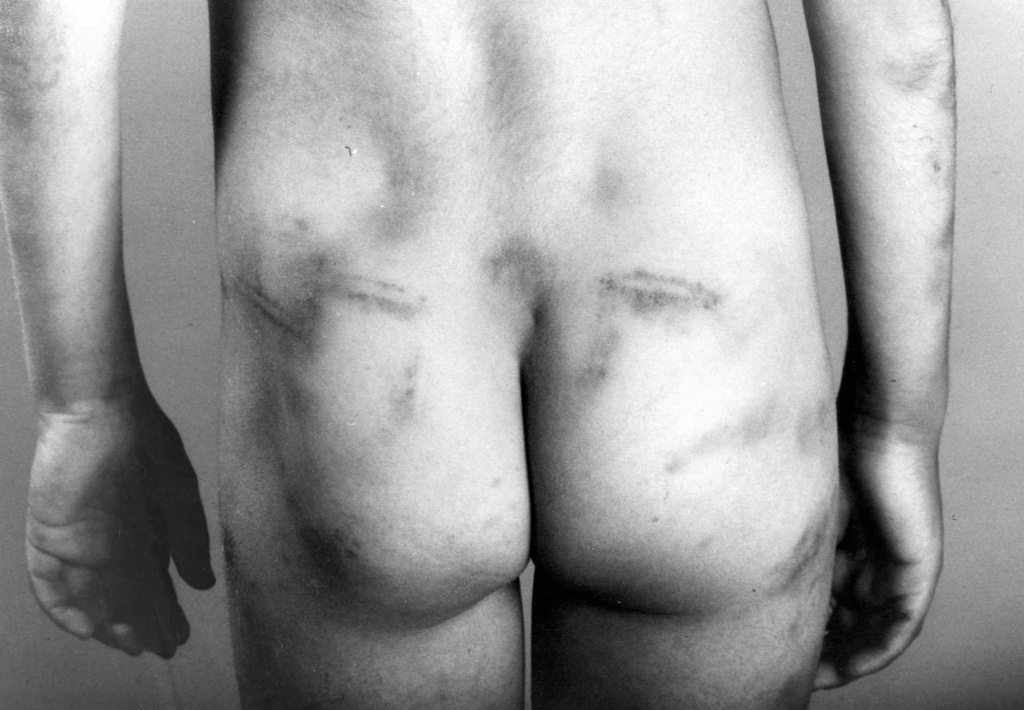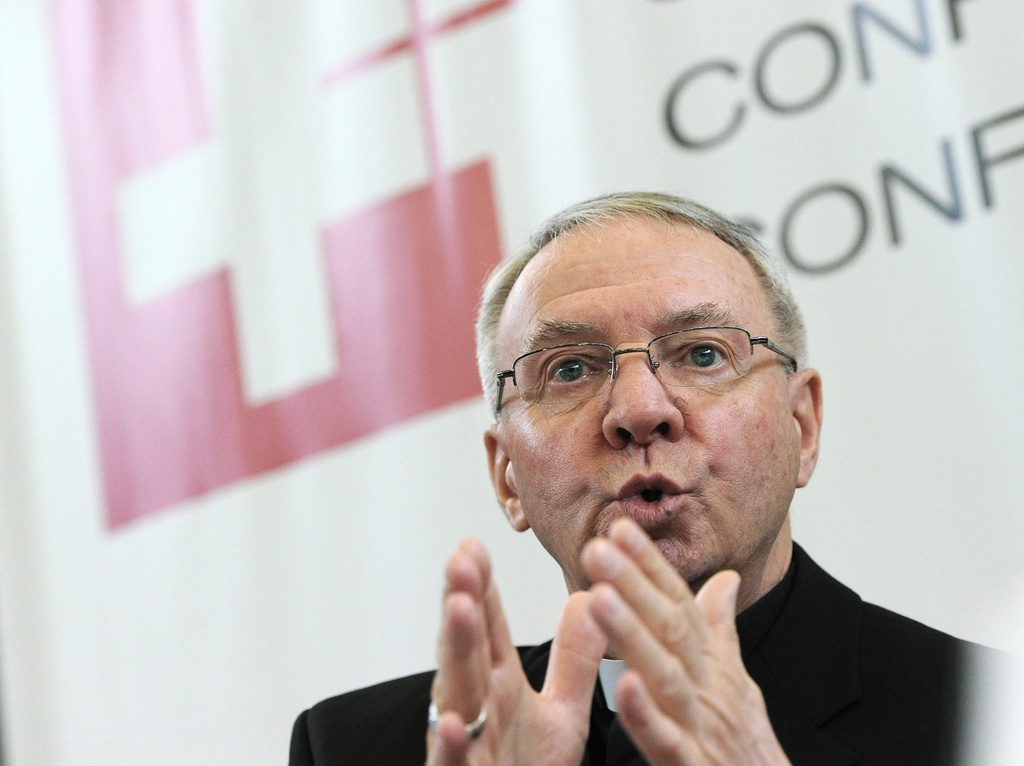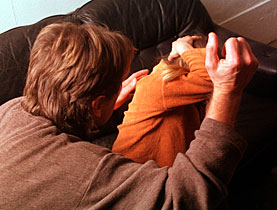Known child abuse cases are “tip of iceberg”

Around 785 children were abused last year in Switzerland according to the biggest statistical snapshot to date, but experts say the real number could be higher.
A study by the Swiss paediatrics society pulled together figures for 2009 from 14 of the country’s biggest paediatrics institutions, for the first time giving an overall scale of the problem.
Of the total, 299 children were subjected to physical violence, another 219 cases were of sexual abuse, 213 children suffered neglect and 121 suffered mental ill-treatment. More than half of the cases affected children aged under six.
The statistics are due to be revised again as data was not available from other children’s hospitals, and as a result Markus Wopmann, head doctor at the Baden clinic for children and adolescents, says the 2010 figure is likely to be higher.
“We can say these statistics are only the tip of the iceberg,” noted Andrea Hauri, head of the department of child protection at the Swiss foundation for the protection of children.
“These are mainly the cases that are treated in children’s hospitals or as out-patients. Most cases do not even appear within the system.”
She told swissinfo.ch that while the statistics did not give a complete picture of the problem, it was nevertheless important that the study had been carried out as it went some way towards showing the number of serious abuse cases.
Some cases are discovered by family doctors, child specialists and people working with children, such as in day care centres – all of which are helping to detect abuse early.
“But I am not saying the system of detection is working in the best way it could. The system is in place but it could be optimised. We think that there is good potential for improving early detection,” said Hauri.
Standstill
The problem is compounded by the federalised Swiss system, with responsibility for child protection decentralised among the country’s 26 cantons.
“As we have a federal system every canton has its own system and priorities, its own tasks that it assumes, and everyone does it differently. There was a need to harmonise this and also to create synergies,” said Hauri.
Her organisation had a mandate from the government’s Federal Social Insurance Office to develop a national child protection programme, along with two private associations. The programme has been reviewed by the cantons, all of which welcomed the idea of better coordination nationwide. But the programme is at a standstill as around half of the cantons do not want to involve private organisations in the work.
It is now due to be discussed again by the cantons and the government before the summer in the hope of making some progress.
Struggling parents
Around 100 experts were consulted for the programme which came up with 29 proposals for projects that promote national goals. One such project is a national helpline for parents who need urgent advice and help in coping with their children. Most cantons do not have such a service and the foundation for the protection of the child believes it could help stop some parents abusing their children.
Wopmann said parents who beat their children are often struggling to cope with some aspect of their own lives. Neglect also happens when the mother is depressed or apathetic and cannot sense her child’s needs, he told the Sonntag newspaper.
Other children may be neglected by parents with addiction problems. They are not given sufficient food or clothing, they are deprived of heating, and they end up malnourished.
One example in the study used to demonstrate past abuse was of three-year-old Laura, who arrived at the cantonal hospital in Baden weighing just 8kg. She has since been improving under state care (see right hand column).
Laura’s parents were Swiss, but Wopmann says that a substantial proportion of physical abuse against children appears to be committed by foreign nationals, typically from Balkan states, Sri Lanka and India. In one case a 15-year-old girl started wearing a wig to school after her father shaved her head, because her parents were angry that she had had a meeting with a boyfriend.
“Shocking”
Following the publication of the statistics, Wopmann has called for detection of child abuse to become a higher priority.
In the same vein, Karin Keller-Sutter, who heads the security and justice department in the St Gallen cantonal government and is vice-president of the umbrella body that brings together all cantonal police directors, has also said police and prosecutors should be better educated about child abuse.
Ludwig Gärtner of the Federal Social Insurance Office admitted that the overall abuse figure was high, but he pointed out that it is not possible to make accurate comparisons with other countries.
“The figure is shocking, but it is hard to compare it and put it into context. What is also always the problem in this kind of situation are the hidden cases,” he told swissinfo.ch.
Jessica Dacey, swissinfo.ch
785 cases overall in 2009
Physical violence: 229 cases – 50% treated in hospital.
Sexual abuse: 219 cases – 15% treated in hospital.
Neglect: 213 cases – 68% treated in hospital.
Mental ill-treatment: 121 cases – 53% treated in hospital.
The overwhelming number of perpetrators are people known to the child; 80% are family members, and only 6.7% are strangers.
In 47% of the cases the perpetrators are men, in 30% are women, in the remaining cases (21%), both sexes carried out the abuse.
Half or the victims are under school age, and a fifth are less than one year old.
Three-year-old Laura* and her three-month-old brother were taken to the paediatric clinic at Baden cantonal hospital suffering from malnourishment. Laura’s parents, who were both Swiss, had already been under investigation by the social services. On a visit by the authorities, Laura was found in a physically and mentally exhausted state. Both children were hospitalised immediately. Laura’s weight was 8kg at the time. Further investigations found the parents incapable of caring for the children who were then placed in a foster family. Criminal proceedings were launched against the parents for severe chronic neglect. Four years on, Laura is doing well, making solid progress physically and is described as normal.
* Name changed
A classmate noticed welts on the arms of 10-year-old Reto*, and the school sent him to the Baden cantonal hospital. Reto explained that his father had beaten him with an electric cable after receiving a letter from the school warning of disciplinary measures in the face of repeated violations of school regulations. When the school tried to work out a solution with Reto’s parents things got worse. Reto’s father failed to turn up to appointments and did not follow agreements. Eventually a child protection group filed a criminal complaint against him and he was fined.
* Name changed

In compliance with the JTI standards
More: SWI swissinfo.ch certified by the Journalism Trust Initiative





You can find an overview of ongoing debates with our journalists here . Please join us!
If you want to start a conversation about a topic raised in this article or want to report factual errors, email us at english@swissinfo.ch.